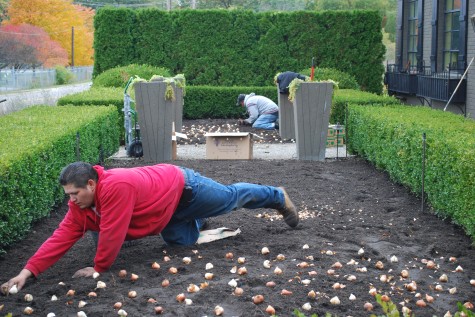
I am embarassed to admit I did not take the time to plant a single tulip last fall-how lame. But I had the entire spring season to regret that decision at my leisure. They smell divine; the colors are not only luscious, they are so welcome after our long grey winter. They are swell as cut flowers. So what was my problem? It is easy to let the spring bulb planting slide, especially if the fall weather is nasty. I am not particularly fond of gardening in freezing weather, beyond digging myself a shelter in the compost pile, and settling in there for a hot lunch and warm apple pie with coffee. Planting bulbs is not especially satifying. You repeat the work of little holes six to eight inches deep times the numbers of bulbs you have; all the while your hands, nose and feet are going numb from the cold . When you have finished, you have nothing to show for your work-just the same dirt surface that was there before you started.
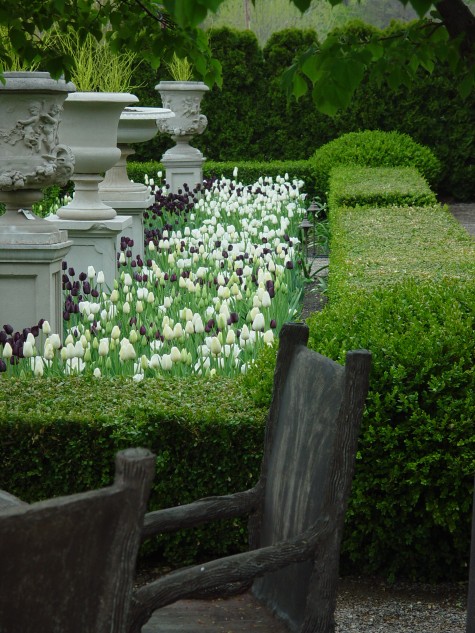 They say delayed gratification is the most adult of all pleasures, so maybe I was being childish about the long hiatus between the planting and the blooming. But when spring finally comes, tulips deliver. It is no small miracle that those small white bulbs with their papery brown covers become a plant that can reach thirty inches tall or better, with strikingly large flowers. Even people whose vocabulary does not include the word “garden”, know the word tulip.
They say delayed gratification is the most adult of all pleasures, so maybe I was being childish about the long hiatus between the planting and the blooming. But when spring finally comes, tulips deliver. It is no small miracle that those small white bulbs with their papery brown covers become a plant that can reach thirty inches tall or better, with strikingly large flowers. Even people whose vocabulary does not include the word “garden”, know the word tulip.
 As is my habit, I welcome the one odd plant out in any mass planting. This ocean of Mrs. John Sheepers is all the better looking for it. The blooming of the tulips is one of those garden moments to be treasured. I certainly was not thinking about how cold it was the day I planted , on this spring day. My tulips shake off any late frost; most of any damage is to the leaves that appear early. They are remarkably resilient to rain and wind.
As is my habit, I welcome the one odd plant out in any mass planting. This ocean of Mrs. John Sheepers is all the better looking for it. The blooming of the tulips is one of those garden moments to be treasured. I certainly was not thinking about how cold it was the day I planted , on this spring day. My tulips shake off any late frost; most of any damage is to the leaves that appear early. They are remarkably resilient to rain and wind.
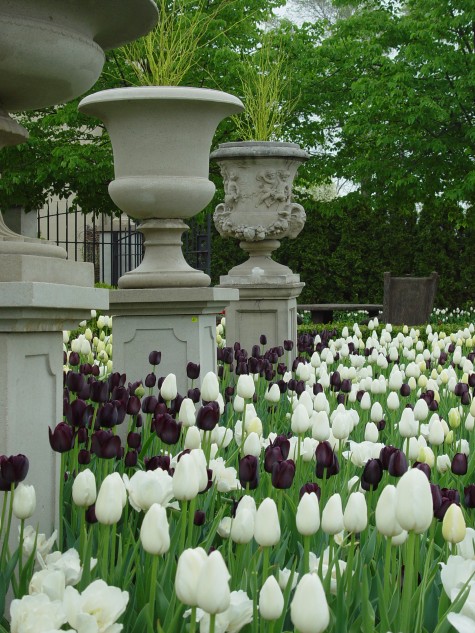 Despite some literature to the contrary, I would not describe a tulip as a perennial. Once they flower, the top size bulb breaks down into smaller bulbs and bulbils. As flower size is directly related to the size of the bulb, a smaller bulb, or collection of will produce smaller flowers, or possibly, no flowers at all. In Holland, once the tulips have bloomed, the bulbs are dug up, sorted as to size and replanted for growing them back to top size. I do not want to dig tulips, separate the bulbs and replant; the Dutch do a much better job of this than I could. This is a long way of saying that I treat my tulips as annuals. When they are done flowering, I dig them and give them away, or compost them.
Despite some literature to the contrary, I would not describe a tulip as a perennial. Once they flower, the top size bulb breaks down into smaller bulbs and bulbils. As flower size is directly related to the size of the bulb, a smaller bulb, or collection of will produce smaller flowers, or possibly, no flowers at all. In Holland, once the tulips have bloomed, the bulbs are dug up, sorted as to size and replanted for growing them back to top size. I do not want to dig tulips, separate the bulbs and replant; the Dutch do a much better job of this than I could. This is a long way of saying that I treat my tulips as annuals. When they are done flowering, I dig them and give them away, or compost them.
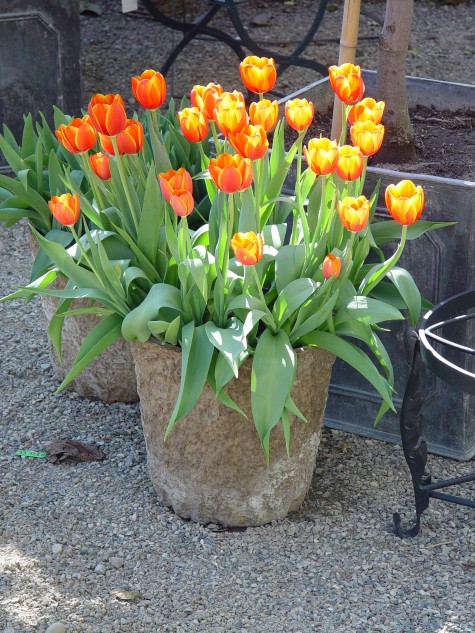 Daffodils are a much better choice of a spring flowering bulb, should you have a requirement that your bulbs rebloom reliably. But they are not tulips. Treating the tulips as annuals permits me to plant them in places where I will later plant summer annuals. As I do not discriminate against summer flowering plants that are only able to grace my garden for one year, so why not have tulips?
Daffodils are a much better choice of a spring flowering bulb, should you have a requirement that your bulbs rebloom reliably. But they are not tulips. Treating the tulips as annuals permits me to plant them in places where I will later plant summer annuals. As I do not discriminate against summer flowering plants that are only able to grace my garden for one year, so why not have tulips?
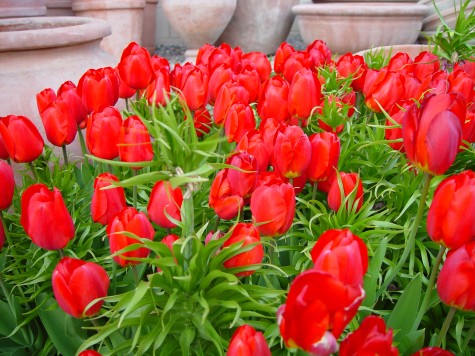
More often than planting in the ground, I do manage to plant tulips in containers which I winter in the garage, or under a thick coating of compost outdoors. I may plant boxes or baskets or galvanized buckets-whatever seems handy. I also may companion plant; the basket of red tulips pictured above was planted in tandem with the giant frittilaria imperialis. The frits were done blooming, but their curly foliage was attractive with the tulips.
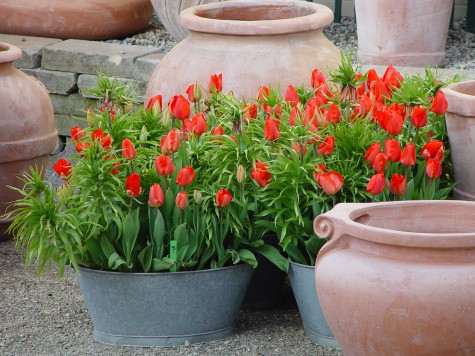
Tulips in containers have the added advantage of mobility. They can be moved to a good spot in a spring garden, or placed on a table, or delivered to a friend who is ill. It also enables me to plant standing up, in the shelter of my garage.

I did plant tulips yesterday-1800 in all. I did a mix of World Expression, Avignon, Maureen and Cum Laude. Should you be interested in checking out my choices, or planting some tulips of your own, I highly recommend Sheepers. www.johnsheepers.com They have a great website, with pictures that will make your mouth water. It is not too late for you to have tulips in the spring.


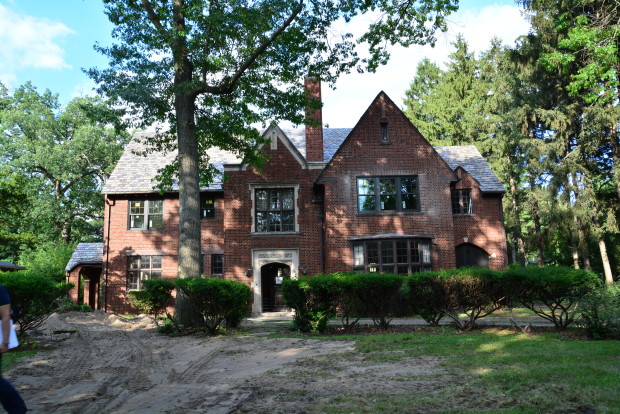
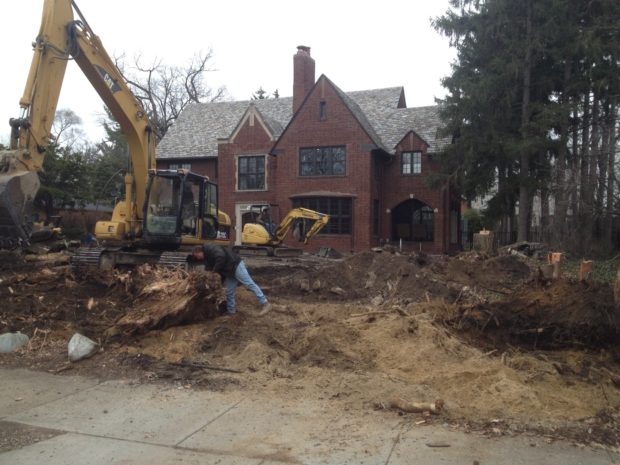

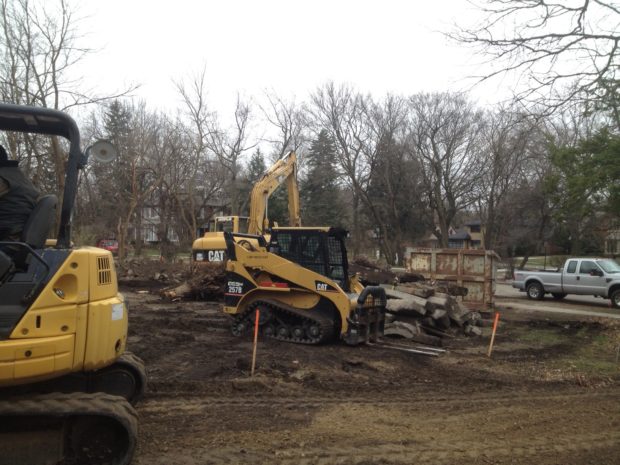

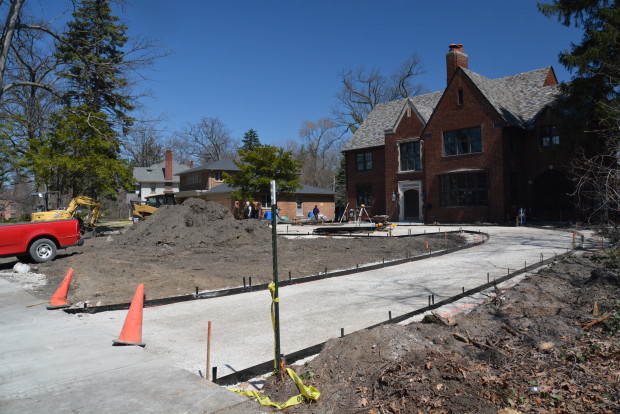

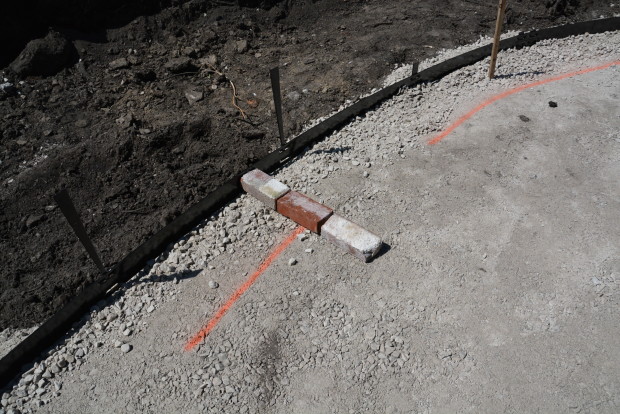
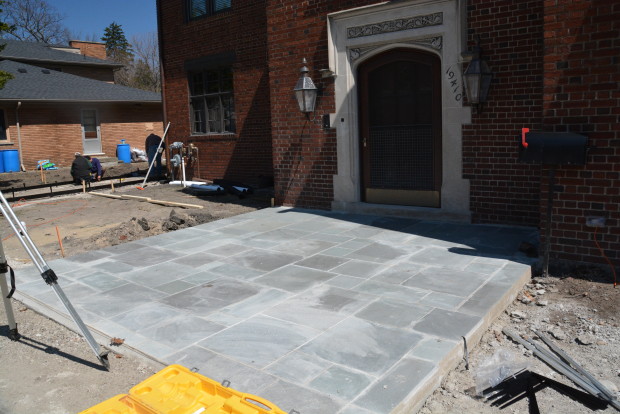

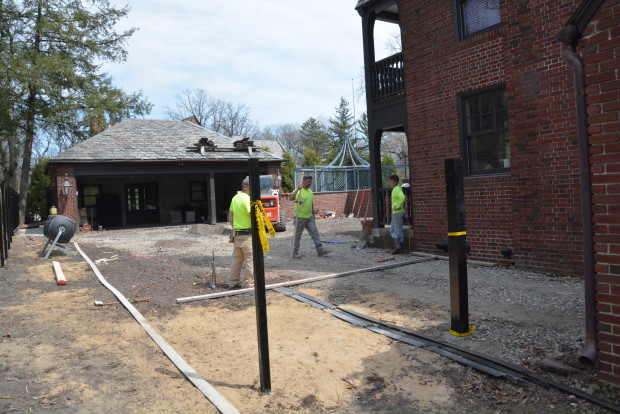
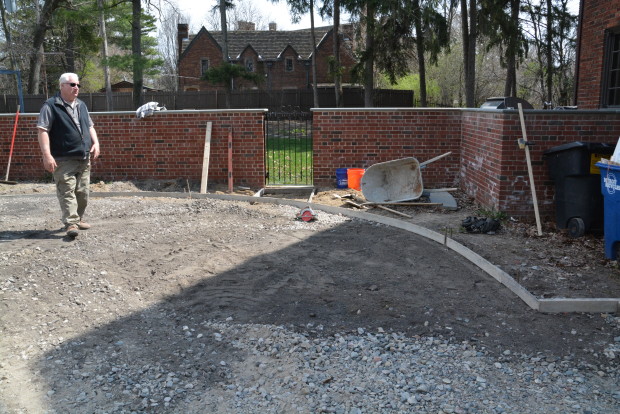
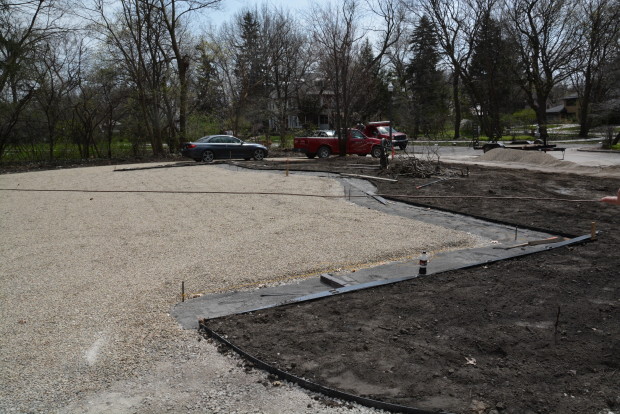
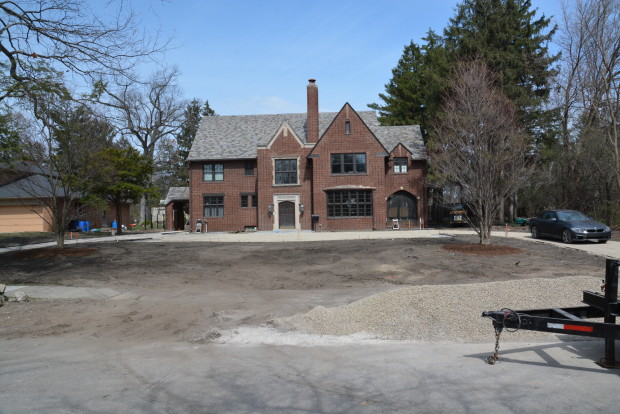

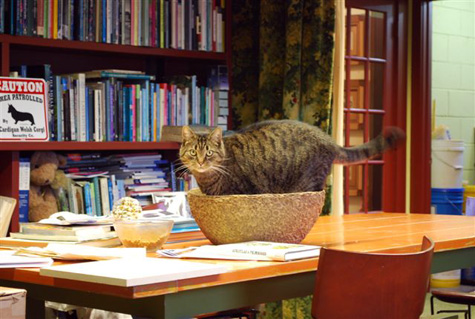
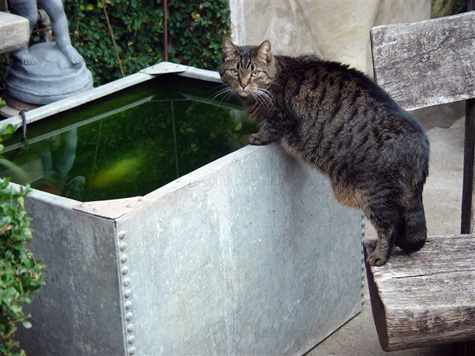
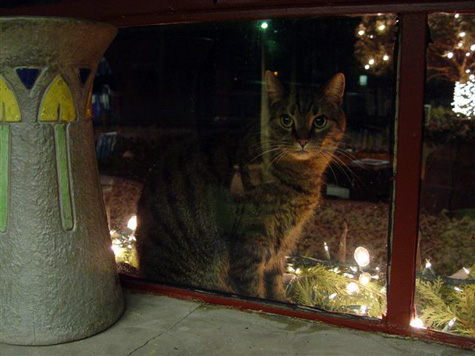

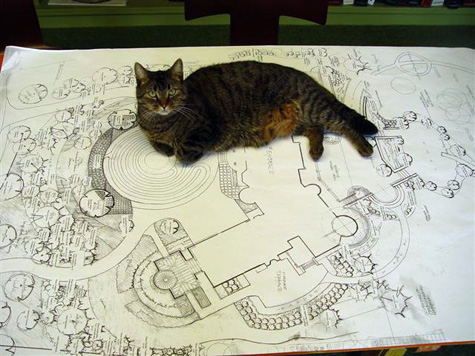
 Though I posted a few weeks ago that the loss of Rob’s schnauzer Libby was the end of an era, that assessment was more about my grief than the truth. Eras overlap. Though she is gone, I have a group of three who this minute delight me. I have many plants still in my garden that date back to my purchase of my house and property 15 years ago. MCat, Milo and Howard shared the space with the schnauzers-how they loved Libby at the last-and how this irritated her. She kept that irritation up start to finish. These three never gave up, hoping she would fall for them. Is this not a story every life has in some version or another? I have old plants in my garden that were no doubt irritated, buffeted by my ownership. The big idea here-eras overlap. Keep the old friends in your garden as long as you can. Welcome your new friends, and move on. Its a new era.
Though I posted a few weeks ago that the loss of Rob’s schnauzer Libby was the end of an era, that assessment was more about my grief than the truth. Eras overlap. Though she is gone, I have a group of three who this minute delight me. I have many plants still in my garden that date back to my purchase of my house and property 15 years ago. MCat, Milo and Howard shared the space with the schnauzers-how they loved Libby at the last-and how this irritated her. She kept that irritation up start to finish. These three never gave up, hoping she would fall for them. Is this not a story every life has in some version or another? I have old plants in my garden that were no doubt irritated, buffeted by my ownership. The big idea here-eras overlap. Keep the old friends in your garden as long as you can. Welcome your new friends, and move on. Its a new era.